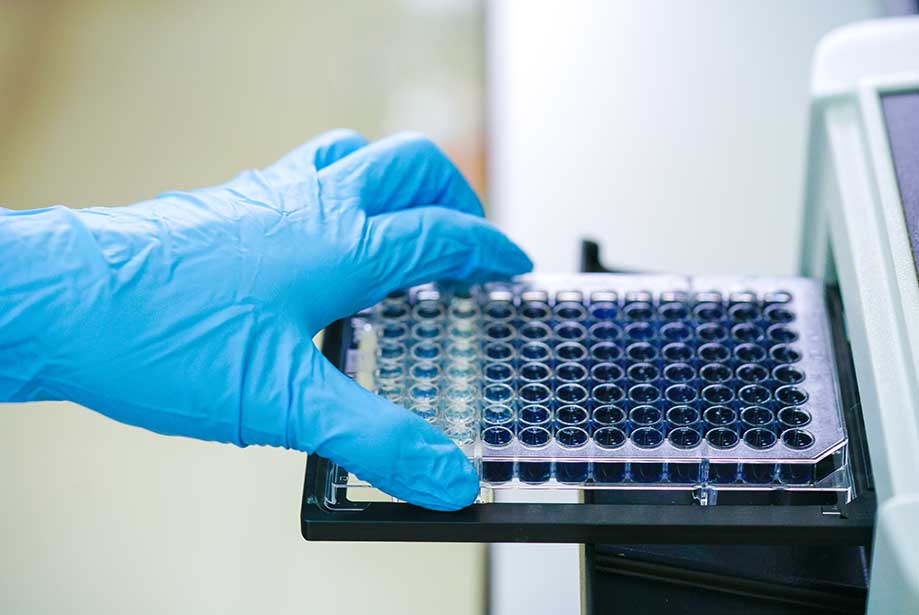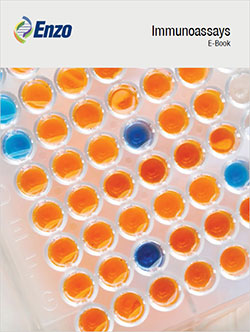The enormous progress in life sciences and healthcare has been achieved through the steady development and improvement of analytical methods. Among these methods, the enzyme-linked immunosorbent assay (ELISA) is an indispensable analytical tool and is routinely used by scientists for the quantification of various biologically interesting molecules at high sensitivity in complex biological samples such as proteins, peptides, hormones, small molecules, etc. Even after more than four decades, ELISAs are still a very popular laboratory tool used by professionals and researchers in the fields of life sciences, health care, and industries because the method is specific, sensitive, reliable, and economical. ELISA can be used either as a qualitative or quantitative technique and capitalizes on the specificity of the antibody-antigen binding found naturally in the immune system. Among several advantages, ELISA offers is the turnaround time in addition to being simple enough to be carried out routinely in the lab for both diagnostic and research purposes. Two critical elements required for a robust ELISA are the sensitivity and specificity of the analyte being assayed. Enzo Life Sciences’ catalog of over
300 ELISA kits includes sensitive, specific, and reliable assays for relevant markers of bioprocess, heat shock response, inflammation and immune response, oxidative stress, signaling pathways, steroid and peptide hormones, and much more.
What is sensitivity and why is it important?
Sensitivity is the lowest value of marker/analyte in assay buffer where the assay can statistically differentiate from background. It is a calculated value that is determined by comparing readouts from many sample replicates of low standard concentrations and zero concentrations. Sensitivity is measured by ΔAbs/Δ Concentration. Assay sensitivity can be higher than the lowest standard point.
Sensitivity in ELISAs can vary widely by type of ELISA (competitive, indirect, or sandwich ELISA), antigens, and mAbs employed, and will have to be determined experimentally.
Competitive ELISAs offer a sensitive method to quantitate low molecular weight antigen generally less than 10,000 Daltons since they are less immunogenic. This type of reaction is one of the few methods possible for low molecular weight antigens with a limited number of epitopes or antibody-binding sites, such as small molecules (e.g.
Direct cAMP ELISA kit), peptides (e.g.
Oxytocin ELISA kit), and steroids (e.g.
Corticosterone ELISA kit). Competitive ELISA is especially useful to measure low concentrations of analytes in the picomolar range, such as the low-abundant
cAMP in cell lysate presents challenges in terms of sensitivity.
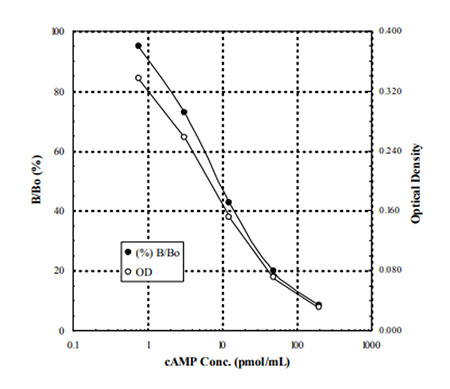
Figure 1. Range and sensitivity of the Direct cAMP ELISA kit
|
Can sensitivity of ELISA be improved?
The sensitivity is the lowest detection level of the marker that the antibody pair used in the ELISA kit can detect. This depends mainly on the affinity of the solid phase antibody according to the law of mass action. Therefore, the use of a high affinity antibody would improve sensitivity. Monoclonal antibodies can have very high affinity for the antigen and therefore, higher specificity than polyclonal antibodies. A monoclonal antibody is used as the detecting antibody in sandwich ELISA to provide improved specificity.
Amplification can be achieved by using biotinylated secondary antibodies followed by streptavidin-HRP improves the sensitivity. The biotin-streptavidin interaction offers a 4:1 increase in signal, since 4 streptavidin molecules can bind/associate with the biotin. This allows detection of smaller quantities of analyte. The measurement of low analyte concentration still poses a problem. There are several publications showing various approaches focused on the detection system by the addition of an amplification step, the use of a multi-enzyme labeled detection antibody, or the use of fluorescent and chemiluminescent substrates. Depending on your research needs, we offer two Testosterone ELISA kits with differing sensitivity ranges. Our
Testosterone ELISA kit can detect as little as 5.67 pg/ml while our
Testosterone high sensitivity ELISA kit can detect as low as 2.6pg/ml.
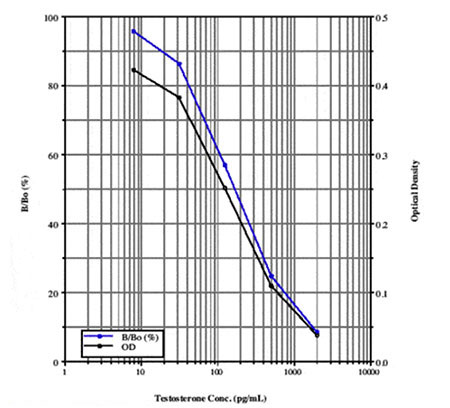
Figure 2. Range and sensitivity of the Testosterone ELISA kit
|
Our
AMP’D® ELISA Signal Amplification kit is designed to replace traditional alkaline phosphatase (AP) substrates, such as pNPP (pNitrophenyl phosphate), with a combination substrate and amplifier system that results in greater sensitivity when compared to a classic (sandwich) substrate enzyme linked-immunosorbent assay (ELISA). In a conventional detection system, enzyme bound to the microtiter plate interacts directly with the substrate producing a color change where the resulting absorbance is directly proportional to the amount of captured analyte. In the AMP’D ELISA system, bound AP converts a substrate that is utilized in a second enzyme reaction system which is initiated by addition of the amplifier reagent. It is this amplification step that allows for greater (amplified) color production at lower analyte concentrations resulting in up to a 50-fold increase in sensitivity over traditional ELISAs.
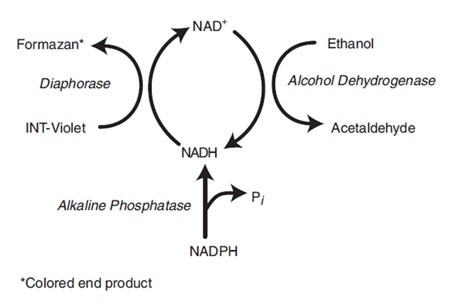
Figure 3. Alkaline phosphatase signal amplification.
|
Specificity of an ELISA
An essential requirement of an ELISA is that it should be specific for the target and the specificity is conferred by the capture antibody. A robust ELISA would benefit when the antibodies do not cross- react with non-target molecules, closely related metabolic products and homologous interfering molecules. Specificity is therefore an important performance characteristic and this can be achieved by selecting validated antibodies that are highly specific for the analyte.
| Compound |
Cross Reactivity |
| human IGF-1 |
100% |
| human IGF-1I |
0.11% |
| IGFBP-2 |
<0.1% |
| IGFBP-3 |
<0.1% |
| IGFBP-4 |
<0.1% |
| mouse IGF-1 |
<0.1% |
| mouse IGF-1I |
<0.1% |
| HGH |
<0.1% |
| HGF |
<0.1% |
| PDGF-BB |
<0.1% |
| human insulin |
<0.1% |
Table 1. Specificity characteristics of Human IGF-1 ELISA kit.
Immunometric assays, also known as sandwich ELISAs, use two antibodies specific to the antigen to capture or "sandwich” antigens in the well for detection. The analyte to be measured is bound between two primary antibodies – the capture antibody and the detection antibody which are matched and they detect different epitopes on the same antigen. Immunometric ELISAs are highly specific as they rely on a pair of antibodies for capture and detection. They are also considered to be compatible with a variety of complex samples without the pre-requisite of sample extraction prior to the analysis. For example,
Human IGF-1 ELISA kit is specific for human IGF-1 and does not react with mouse, rat, rabbit or samples from other species. The cross reactivity for a number of related compounds were determined by diluting cross reactants in the Human IGF-1 assay buffer at a concentration of 600,000 pg/mL. These samples were then measured in the assay and the results are shown in Table 1.
Polyclonal antibodies (pAbs) are not highly specific to one particular epitope. When pAbs are used, non-specific interactions may be detected and this can be addressed by pre-adsorbing with the secondary antibody. Pre-adsorbed secondary antibodies can reduce non-specific background staining, which is useful for applications including IHC when working with closely homologous species. Polyclonal antibodies are typically affinity purified and this assures specificity is assured. The level of specificity must be determined for each assay. In defining the specificity criteria for antibody selection, absence of cross reactivity with unrelated molecules is selected for antigen detection. The cross reactivities for a number of related compounds are determined by diluting the cross reactants in the assay buffer at a concentration of one hundred times the high standard then measured in the assay. Our
Oxytocin ELISA kit is highly specific with very low reactivity with vasopressin providing confidence in assay results.
| Compound |
Cross Reactivity |
Compound |
Cross Reactivity |
| Mesotocin |
7.0% |
Somatostatin |
<0.02% |
| Arg8-Vasotocin |
7.5% |
Met-Enkephalin |
<0.02% |
| Ser4,Ile8-Oxytocin |
<0.02% |
VIP |
<0.02% |
| TRH |
<0.02% |
Lys8-Vasopressin |
<0.02% |
| Growth Hormone |
<0.02% |
Arg8-Vasopressin |
<0.02% |
| Tocinoic acid |
<0.02% |
α−ANP |
<0.02% |
Table 2. Cross reactivity of compounds using the Oxytocin ELISA kit
|
The immunoassay landscape is evolving and in recent years, the development of reduced assay step protocols, no wash ELISAs and new automated systems designed to run ELISA have entered the laboratories. More recently, bead-based methods and microfluidic platforms have started to impact immunoassays and by coupling with single molecule detection, they look set to take the sensitivity of traditional ELISA to new levels. Perhaps most significantly are the big increases in assay sensitivity and the widening of the dynamic range accomplished by using alternatives to the traditional colorimetric detection and miniaturization. Please check out our
E-Books and our
10 tips for successful ELISA assay for additional information or contact our
Technical Support Team for further assistance.



